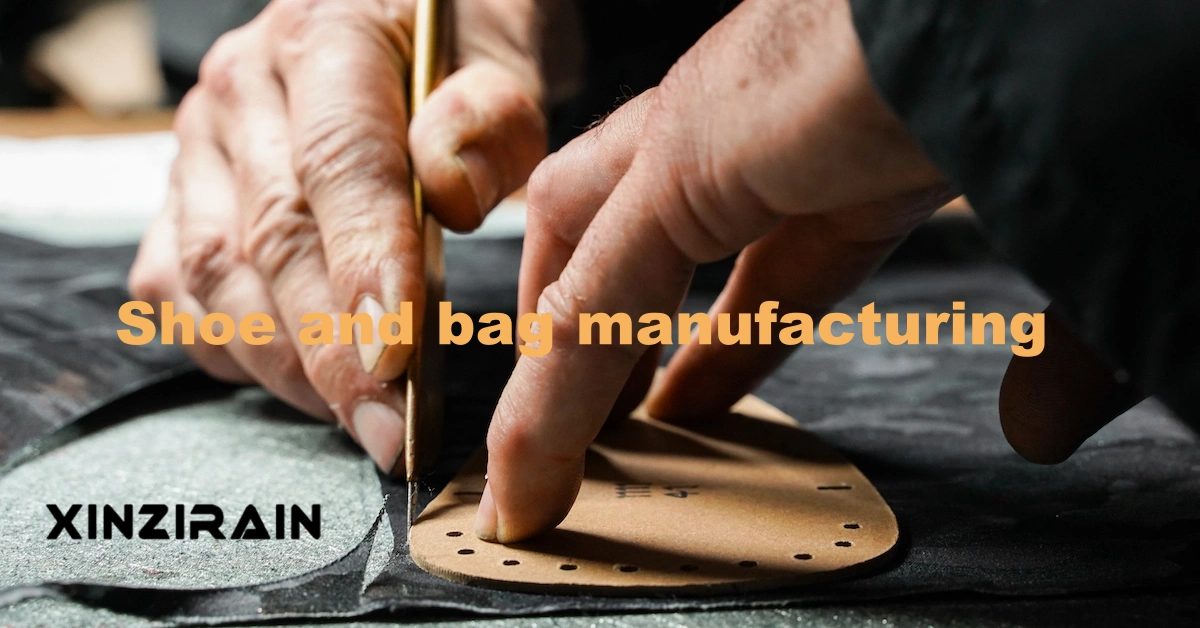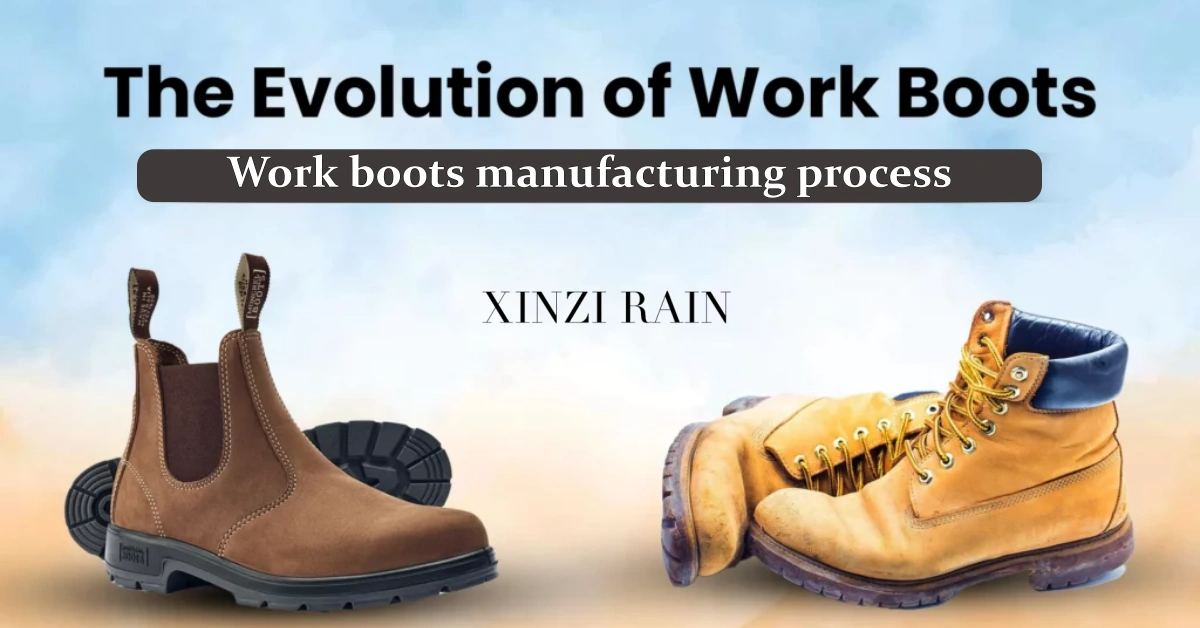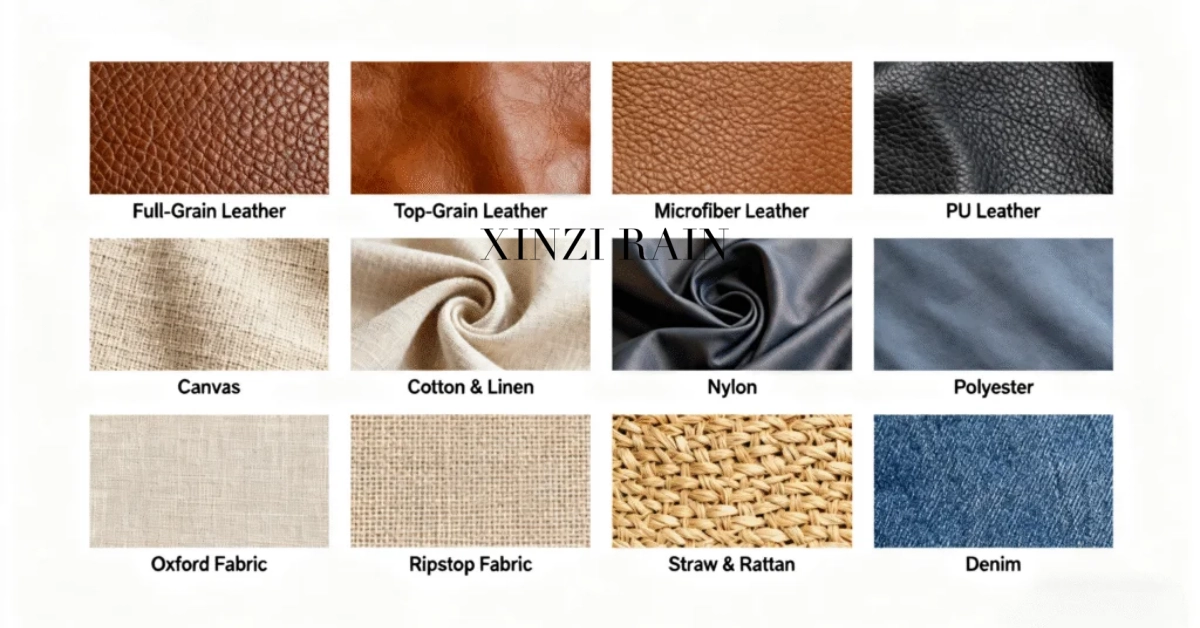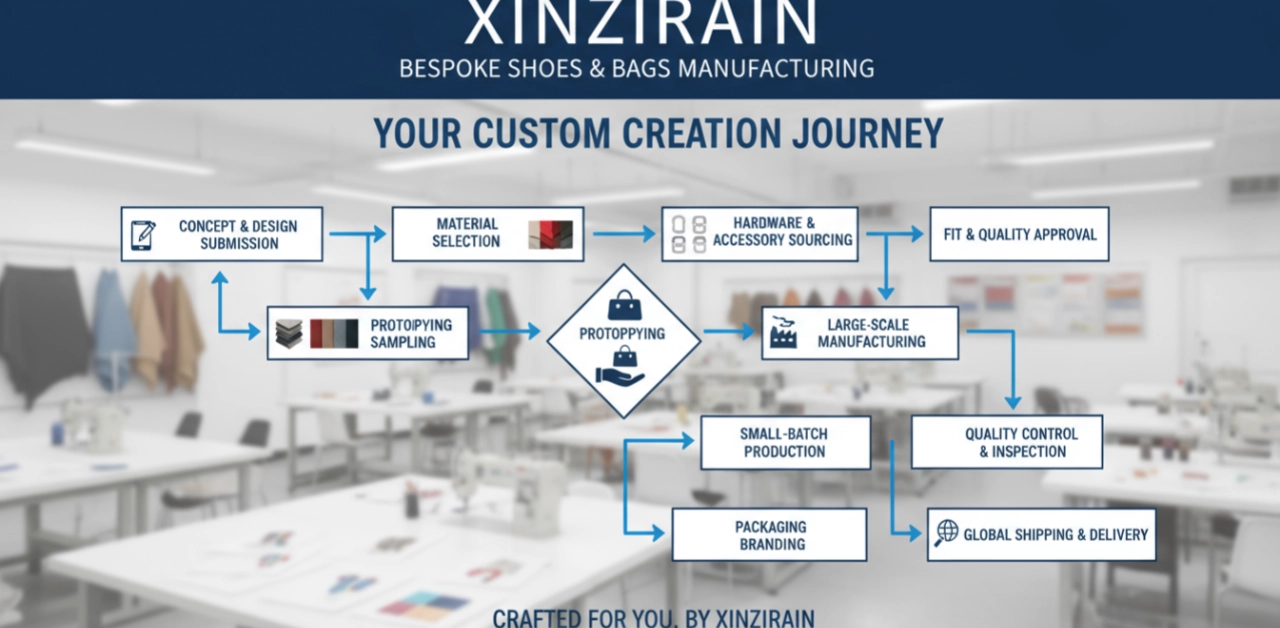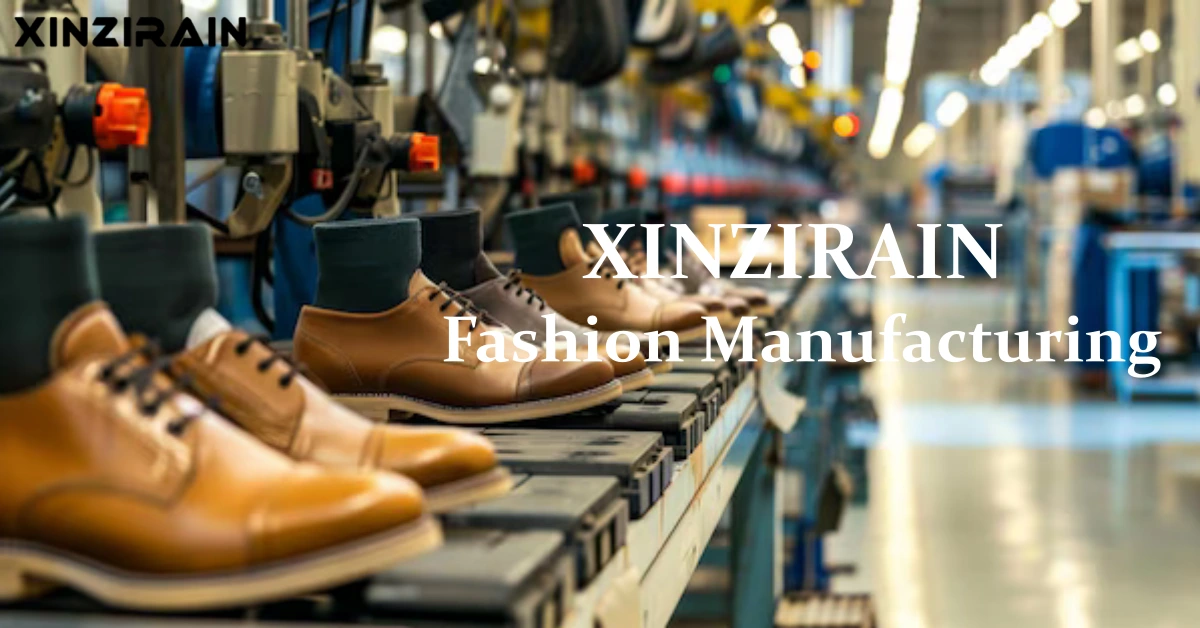Shoe and Bag Manufacturing: The Invisible Engine of Fashion
In a fashion economy valued at over $2.5 trillion USD annually, footwear and bag manufacturing plays an irreplaceable role. According to the World Footwear Yearbook 2024, more than 22 billion pairs of shoes are produced every year — and 87% of them come from Asia. Meanwhile, China, Vietnam, and India together account for nearly 70% of the world’s bag exports.
Behind these impressive figures lies a vast network of specialized shoe and bag factories that bring creative designs to life. They are not just production partners — they are the foundation upon which global brands build their success.
A Global Value Chain: From Raw Materials to Retail
The journey of every fashion item begins long before it reaches a store shelf. It starts with materials — from premium Italian leather and technical fabrics from Korea to natural rubber from Southeast Asia. These materials converge in manufacturing hubs where design meets craftsmanship.
Once materials are ready, design and prototyping take center stage. Brands collaborate with shoe and bag manufacturers to develop samples, refine shapes, and finalize production details. This partnership is often built on ODM/OEM models, enabling efficiency and flexibility across global timelines.
In world-class shoe and bag factories located in China, Vietnam, and Bangladesh, precision manufacturing transforms raw materials into finished products. From cutting and stitching to bonding and assembling, every process is carefully monitored. After production, quality control and certifications — including ISO, BSCI, and Sedex — ensure global compliance and customer satisfaction.
The final step involves logistics and export. More than 90% of footwear and leather goods are distributed via B2B channels to Europe and the Americas, completing a truly global value chain from design to doorstep.
From OEM to Co-Creation: The Evolution of Manufacturers
Over the past decade, shoe and bag manufacturers have undergone a profound transformation. What was once a cost-driven industry focused solely on OEM production is now evolving into a value-driven ecosystem emphasizing design, R&D, and innovation.
Many factories have established in-house design and development teams, allowing them to collaborate with brands on concept creation and material innovation. With the introduction of 3D sampling, digital patterning, and AI-driven material selection, production timelines have shortened by up to 40%, while product precision and flexibility have improved significantly.
Today’s manufacturers are no longer passive suppliers. They are strategic partners — co-creators who share the responsibility of shaping trends and maintaining a brand’s competitive edge in the fast-paced global market.
Sustainability: The New Standard for Global Manufacturers
Sustainability has become a defining benchmark in global sourcing. As major fashion brands tighten their ESG (Environmental, Social, Governance) standards, leading shoe and bag factories are investing heavily in eco-friendly production.
The shift is evident across the industry. The number of shoe and bag manufacturers using recycled leather, bio-based PU, or regenerated nylon increased by 57% in 2024. Energy-efficient manufacturing systems have reduced average carbon emissions per pair of shoes by 22%. Some global leading shoe and bag manufacturers are even taking part in circular initiatives — collecting and reprocessing discarded leather goods to create new products.
These changes mark a shift from traditional production to a responsible and regenerative model — one that aligns with the growing demand for sustainable fashion worldwide.
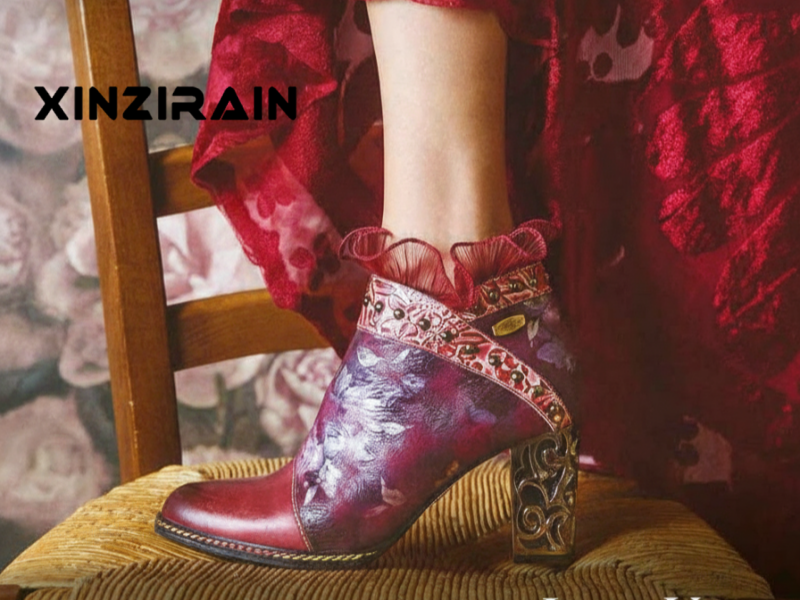
What Defines a Global Leading Shoe and Bag Manufacturer
The most successful manufacturers in today’s market distinguish themselves through innovation, flexibility, and end-to-end service.
They offer multi-category customization, producing everything from sneakers and boots to handbags and travel accessories. Their flexible production systems allow for smaller MOQ orders and fast turnaround, helping brands accelerate time-to-market.
Internationally certified and compliant, they ensure quality and social responsibility at every step. From design consultation and prototyping to mass production, packaging, and logistics, these factories provide a seamless full-service manufacturing solution.
In doing so, they have redefined their role — not just as producers, but as co-creators and brand builders within the global fashion supply chain.
Manufacturing as the Future of Fashion
In today’s interconnected fashion world, a shoe and bag factory is more than a production site — it is a hub of creativity, technology, and innovation.
Manufacturing is no longer just about output; it’s about craftsmanship, sustainability, and strategic value creation. As the industry embraces digital transformation and green innovation, shoe and bag manufacturers are stepping into the spotlight as vital partners shaping the future of global fashion.
Those who master the balance between design excellence and manufacturing precision are not only producing products — they are building the next generation of fashion success stories.

